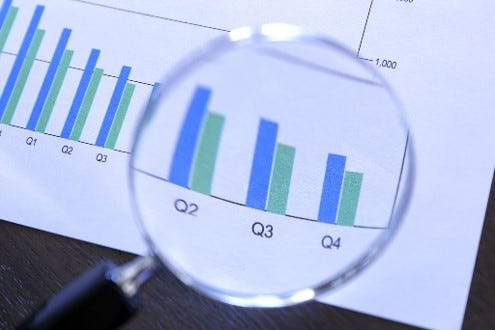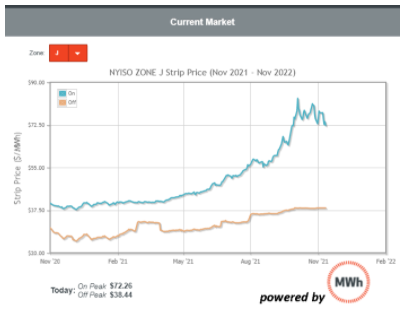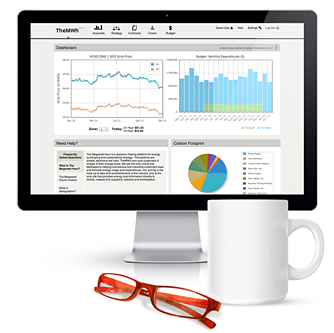

Member Spotlight: The Megawatt Hour
Medium Monday, March 7th 2022
Dynamo Energy Hub is delighted to present an interview with Deirdre Lord, Co-Founder of The Megawatt Hour and clean tech board member and advisor. At The Megawatt Hour, Deirdre and her team are working to transform the energy industry to the benefit of end-use customers. Deirdre spoke with Dynamo’s Content Manager, Annie Kuenning, to discuss how The Megawatt Hour provides easy, accessible online solutions for decision makers who want to minimize energy costs, manage energy expenses and information quickly, easily and with better results.
Annie: Hi Deirdre, thank you so much for taking the time to speak with me today! I was hoping we could begin by having you tell us about The Megawatt Hour.
Deirdre: Thanks for having me! The goal of The Megawatt Hour is to bring transparency and clarity to energy decisions. When our customers — mainly large businesses, commercial and industrial consumers — first come to us, they generally don’t have great insights about what they have paid or are likely to pay for energy. Ultimately, we’re trying to help our customers minimize energy costs and save time while improving business outcomes.
Customers first use our service to minimize cost. They end up staying with us because The Megawatt Hour provides transparency and clarity. We give our customers peace of mind and confidence in the decisions they’re making for their businesses.
Annie: How and why was The Megawatt Hour founded? And how are you achieving your mission?
Deirdre: Bob Bright and I co-founded The Megawatt Hour after working in retail energy. We met at New Energy Ventures, now Constellation, which was one of the independent suppliers of electricity. We went on to work together at Juice Energy, a retail company I co-founded with former Constellation colleagues.

I learned about energy markets and retail energy from the ground up. I started in customer service and then went on to build several retail businesses. The last retail business I was involved with, Juice Energy, was focused on green power and transparency. After we closed that business, Bob and I dug into what was missing from the retail energy supply chain. Our former customers told us that they never felt confident in the decisions that they were making. There is no Expedia or Schwab online for customers in energy markets. In retail electricity and natural gas, there is no information resource that links customers to market information.
Our job is to help customers navigate the energy transition by equipping them with information to help them understand what drives cost and usage so that they can make sound investments in energy efficiency and renewables.
We’re constantly told by our customers that we provide them with information they can’t access anywhere else. The information and insights provided by our software and service make our customers feel more confident and give them a true understanding of how to make decisions.
Annie: I want to expand on The Megawatt Hour providing information that isn’t easily accessible. How do you get the data and what obstacles do you have to overcome to obtain it?
Deirdre:
If collecting the data we provide to our customers was easy, many more companies would be doing it.

One hurdle is collecting utility data. For context, not even commercial customers have great access to their own utility data. One of the first things we get is a customer’s historical usage and the characteristics of their facility. All this information is at the utility meter or account level. Even after our customers give us permission to collect that information, it’s not done easily. We not only have to get approved by the utilities to obtain the data, but we also automate data access as well.
Once we have utility data, we need to transform that data into meaningful information, like usage and cost forecasts. Customers can’t just open up The Wall Street Journal and find a cost forecast for their facilities. We have to transform usage and cost data into code. Fortunately, my business partner Bob knows pricing and wholesale and retail markets inside and out, so he is adept and helping translate pricing data into meaningful information.
Annie: What are the main benefits that the Megawatt Hour offers to its customers?
Deirdre: One large benefit is cost savings. All customers want to save or minimize costs, but unfortunately our customers aren’t purchasing energy in a set market — we’re operating in volatile financial markets.
What Megawatt Hour is trying to do is make sure that our customers meet the goals they’ve set around their energy cost and usage. For example, some customers want to be able to budget with confidence and know what they’ll spend per kilowatt hour over the next three years. Other customers want to make sure that they are paying the lowest rate possible. Neither of those goals is achievable without reliable forecasts and expert insights, that’s especially true when markets are as volatile as they are now.
The Megawatt Hour is not only trying to minimize cost, but also trying to make sure that our customers are making decisions based on a realistic forecast of usage and cost.
Annie: Can you explain what you mean when you say the energy market is opaque and volatile? And how does this influence your customers’ decisions?
Deirdre: Think about electricity. It’s a product and service that customers can’t see and have to pay for after it is consumed. Remarkable and unique. The market is opaque for a whole host of reasons. First, there are many players involved in ultimately delivering power to a customer’s meter; none of them have a real interest in making their product costs transparent to businesses. Second, it’s a commodity that is governed by financial markets. Third, there are very few players who have the specialized information and capabilities to make markets transparent. Finally, there are few forward looking information resources available to customers to bring clarity around these decisions. The market is volatile right now for a whole host of reasons: the hangover from the pandemic, supply/demand imbalances, geopolitical disruptions. Opacity and volatility together make these markets incredibly challenging to navigate.

As an example, the wholesale price of electricity in NYC this time last year was $37.50. Today, it’s $71.25. So, as a customer is budgeting for energy, they can’t just look back at last year’s cost and add an inflation adjuster. Anyone trying to make decisions about their business for the next three years is not going to be successful simply by looking at the last 12 months. Successful planning and budgeting will only come from knowing the true cost of energy over the next few years and months. It can’t be based off a best guess.
Customers want to know what to pay and how the market is moving. But this information isn’t useful unless it’s translated it into something meaningful, like a unit rate. And this is what our software can do.
Annie: Do you work with customers to analyze the information your software gives?
Deirdre: Some of our customers will take the information and make their own decisions — many use the advisory services that come along with the software to give the information context.
Especially right now, our customers will ask us what to do given they’re seeing a plethora of factors such as inflation, disruptions in the supply chain, and volatility — just to name a few. Our general advice is to look forward and plan ahead as much as possible.

We’re recommending that our customers take advantage of volatility instead of being subjected to it. Ultimately, we want our customers to feel in control.
Customers will often say that energy price and volatility is out of their control. This is a huge myth. With access to the right information, energy buyers can control their costs and don’t have to be at the whim of the market.
Another myth is that customers often feel the data is far too complex to understand. While the market is undoubtedly complicated, Megawatt Hour’s job is to help display the information in a way that makes sense to people.
Annie: I was hoping now we could pivot the conversation to a recent personal accomplishment of yours, as you were the lead author on a cover article in District Energy magazine that was just published. Can you tell us about the piece and its importance?
Deirdre: The article is a great demonstration of what we’ve been discussing — essential to this decision was a forecast of cost and usage…Bert Bland at Cornell did the original analysis with his colleagues in the late 1990s, when cost and usage forecasting was even more challenging than it is today.
The backstory is that 20 years ago, when the Montreal Protocol phased out CFCs, Cornell University had to figure out a way to provide cooling to the campus that was compliant with the ban on chlorofluorocarbons. Their options were to completely retrofit their existing chillers, or use the cold, deep waters of nearby Cayuga Lake to supply campus cooling via a heat exchange facility.
The chiller replacement was a well-known technology that had lower up-front costs but higher operating costs. The lake source cooling (LSC) option was less proven, more capital intensive but had far lower operating costs. The project economics required looking at the tradeoffs between the options and analyzing the long-term benefits of both. Based on thorough economic analysis, the University chose to invest in lake source cooling.
Last spring was the 21st anniversary of the start-up of LSC. With two decades of data from this operating plant, Cornell wanted to understand how the data matched up to the 1990 forecasts. We helped support the students engaged in doing the analysis. Initially, we helped the students who conducted the analysis create a counterfactual case about what the chillers would have cost over this 20-year period. Long story short, choosing the lake cooling system has been an absolute home run for the university. It’s avoided more than 120,000 metric tons of CO2 and it paid back in about seven years.
The lessons learned from the article for me are: the project was a home run — but the analysis to get there was critical; the importance of a robust and thoughtful analysis to understand and quantify the tradeoffs between higher capital cost/lower operating cost technologies; the power of the living lab — it’s always helpful to take advantage of the talent available– engage finance, facilities, students, academics, purchasing, the community. Cornell has committed to being carbon neutral by 2035. This project was an essential step in moving down that path. And imagine if there had been a carbon market over these past 20 years?
Annie: Why did The Megawatt Hour join the Dynamo community and how does The Megawatt Hour benefit from being part of Dynamo?
Deirdre: There are countless benefits to being part of the Dynamo community. I love the physical hub space that Dynamo provides as well as attending the Cleantech Founder’s Breakfast Club. The Cleantech Founder’s Breakfast Club offers a forum that isn’t provided anywhere else. I also really enjoy working with the people at Dynamo.
Dynamo brings people together who are vital to facilitating the energy transition. The energy sector often operates within isolated bubbles — in one corner you have policy, in another you have a cleantech, in another you have customers. Before, there wasn’t a central clearing house in which we could collectively work together in the energy transition. Dynamo fostered that link and connection between different entities and organizations across the energy sector. We wanted to be part of that dialogue and be brought into that discussion. And that’s what Dynamo has afforded us — the ability to interact efficiently with different facets of the cleantech world.
Annie: Thanks so much, Deirdre, for taking the time to talk with me today! We couldn’t be happier to have you as part of the Dynamo community.
For media relations contact
Claudia Prandoni Marketing & Communications Manager